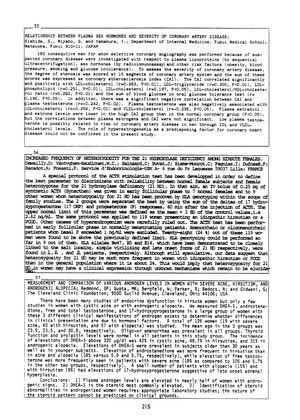Increased Frequency of Heterozygosity for 21-Hydroxylase Deficiency Among Hirsute Females
January 1986
in “
Journal of Steroid Biochemistry
”

TLDR Women with excessive hair growth or polycystic ovary disease may more often carry a gene variant for 21 hydroxylase deficiency.
The document reports on a study that investigated the frequency of heterozygosity for 21 hydroxylase deficiency (21 HD) among females with idiopathic hirsutism or polycystic ovary disease (POOD). A special protocol of the ACTH stimulation test was developed and applied to 7 normal females and 9 females with proven heterozygosity for 21 HD. The best separation between the two groups was achieved using the sum of the deltas of 17 hydroxyprogesterone (17 OHP) and progesterone (P) responses, 60 minutes after ACTH injection. The upper normal limit of this parameter was defined as the mean + 3 SD of the control values, which is 2.62 ng/ml. This protocol was then applied to 119 women with idiopathic hirsutism or POOD, excluding those with other causes of hyperandrogenism. Out of these 119 women, 28 (24%) were found to be above the previously defined limit. HLA genotyping performed on 9 of these women identified HLA alleles Bw47, B5, and B14, which are linked to different forms of 21 HD. The data suggest that heterozygosity for 21 HD may be more frequent in women with idiopathic hirsutism or POOD than in the general population, where it is about 2%. The study implies that heterozygosity for 21 HD in women may have a clinical expression through mechanisms that are yet to be elucidated.




